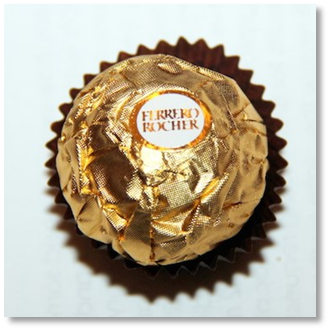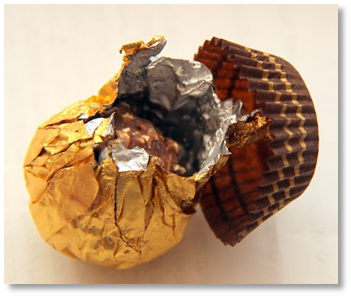How Great Products Are Built
In a
previous blog post, I discussed how being pure in terms of engineering process
(agile scrum vs. waterfall) doesn’t make sense. I covered the necessity of
understanding individual skills, culture, etc. as a precursor to driving the
most out of team members. Over time, the team further gels and builds momentum by
feeding off individual energy, trust, and commitment. My colleague, Ashish
Prasad, wrote about this in his blog post about the
Engineering War Room for Evoq
Social.
It Tastes Good?

Recently,
while helping to jumpstart a new product solution at DNN Corp, I had the occasion
to ponder another important aspect of engineering process: design. A co-worker,
Kevin Tufts (UI/UX Designer) wrote about the
importance of sketching in the design
process I’d like
to look more deeply at design as a precursor, rather than jumping quickly into
code. But rather than focusing on software, let’s look at something different:
chocolate. Yes,
chocolate!
Let’s face
it, most people enjoy chocolate. But how many people associate the creation of
fine chocolate with design? Not many! Sure, they think about trial and error
formulas, blended into creative mixtures of elements, which play with the sense
of taste and smell. However, there is another aspect of this process and it
concerns presentation: the presentation of the delightful treat itself.
Let’s look at
Ferrero Roche. You may have seen their commercials on TV. They convey suave elegance
to highlight the candy’s exquisite taste. In so doing, it’s impossible to
ignore the elegant gold packaging atop a dark brown paper tray, in addition to
comments about the chocolate’s excellence.

If you’ve
had occasion to try a Ferrero Roche, you know its sumptuous qualities. It
delights the pallet! The company describes the delicacy as “smooth chocolaty
cream surrounding a whole hazelnut; with a delicate, crisp wafer, all enveloped
in milk chocolate.”
BUT, did you also take note of the packaging?
Gold
wrapping, red letters, the brown paper tray: how it’s gently stuck together.
Pulls open simply. Beauty, ease, taste: a complete experience!
Novices and Experts Really Want
the Same Thing
This
experience is not unlike what we want in software.
We want customers to feel an emotional connection with our products.
We want them to quickly recognize and repeatedly savor their value.
There is no
silver bullet for realizing these results. However, there are parallels to fine
chocolate. It’s all about the experience, and stepping through it top to bottom,
frequently during the course of a project. With strict attention to detail and
the willingness to be demanding, team members can and will deliver the goods.
It’s easy to
cite the need for extensive, detailed mockups. That’s pretty obvious. What’s
tricky is how to define these mockups; how to arrive at a point where they can
take shape. It requires time spent
observing
and constructing user personas
whose actions are carefully mirrored in
drawings.
Whether
computer-generated or drawn by hand, it doesn’t matter. What does matter is
realism in terms of actions taken and the
purpose
behind those actions. Stepping carefully through those, questions are asked
as to why each action is taken, what objects are desired, and how tasks can be
simplified. This is a painstaking, iterative process which has no shortcuts.
You Can Be Agile and Still Think
Ahead

Image source: Jordanhill School D&T Dept on flickr.
Modeling
behavior is a good way to start the process of working with mockups, but it’s
the tip of the iceberg. There is no substitute for continually revisiting
objectives, pondering how process steps can be eliminated, how steps can be
simplified to such a degree that the product’s operation becomes obvious.
When that
point is reached, it’s easy to refine for improved viewing (e.g. contrasts and
shading), make pleasing to the eye (e.g. colors) and become intuitive (e.g.
animations). With good balance between these attributes, a well-working product
that is correctly priced for value stands a good chance of success.
Conclusion
So let’s
revisit the parallel to a finely prepared and packaged chocolate candy, like
Ferrero Roche. There is no substitute to forethought, i.e. design. It’s great
to be fast and agile with code, but if you don’t get the mixture right from the
start, the result won’t be delectable.
Obvious
value; great preparation; simplified access and repeatability
of that value
make for a product that’s impossible to pass up. Emotional tie established.
Enjoy!